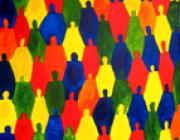Can Government Be Self-Organized? A Mathematical Model of the Collective Social Organization of Ancient {Teotihuacan}, Central {Mexico}
| Title | Can Government Be Self-Organized? A Mathematical Model of the Collective Social Organization of Ancient {Teotihuacan}, Central {Mexico} |
| Publication Type | Journal Article |
| Year of Publication | 2014 |
| Authors | Froese, T, Gershenson, C, Manzanilla, LR |
| Journal | PLoS ONE |
| Volume | 9 |
| Pagination | e109966 |
| Date Published | 10 |
| Abstract | Teotihuacan was the first urban civilization of Mesoamerica and one of the largest of the ancient world. Following a tradition in archaeology to equate social complexity with centralized hierarchy, it is widely believed that the city's origin and growth was controlled by a lineage of powerful individuals. However, much data is indicative of a government of co-rulers, and artistic traditions expressed an egalitarian ideology. Yet this alternative keeps being marginalized because the problems of collective action make it difficult to conceive how such a coalition could have functioned in principle. We therefore devised a mathematical model of the city's hypothetical network of representatives as a formal proof of concept that widespread cooperation was realizable in a fully distributed manner. In the model, decisions become self-organized into globally optimal configurations even though local representatives behave and modify their relations in a rational and selfish manner. This self-optimization crucially depends on occasional communal interruptions of normal activity, and it is impeded when sections of the network are too independent. We relate these insights to theories about community-wide rituals at Teotihuacan and the city's eventual disintegration. |
| URL | http://dx.doi.org/10.1371%2Fjournal.pone.0109966 |
| DOI | 10.1371/journal.pone.0109966 |
- Log in to post comments
- Google Scholar
- DOI
- BibTeX
- RTF
- Tagged
- MARC
- EndNote XML
- RIS

